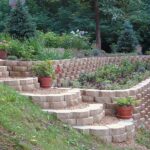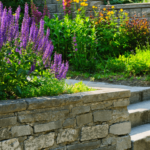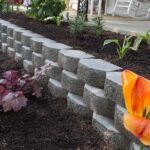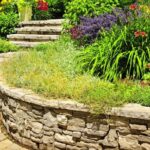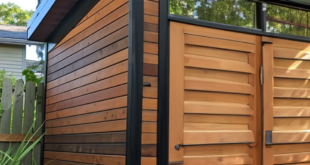A garden retaining wall is a structure designed to hold back soil in a garden or landscaping area. These walls can serve both functional and aesthetic purposes, providing support for slopes and creating visual interest in outdoor spaces. Retaining walls can be constructed using a variety of materials, including stone, brick, concrete, and timber. Each material offers its own unique advantages and can be customized to suit the specific needs and style of a garden.
One of the primary functions of a garden retaining wall is to prevent soil erosion and control the flow of water. By creating a barrier between different levels of elevation, retaining walls help to stabilize the soil and prevent it from washing away during heavy rains or other weather events. This can be particularly important in areas with steep slopes or poor drainage, where erosion and runoff can cause significant damage to the landscape.
Retaining walls also help to maximize the usable space in a garden by creating flat, level areas for planting, seating, or other activities. This is especially beneficial in sloped or uneven terrain, where without a retaining wall, the ground may be too steep or unstable to support a garden or hardscape features. Retaining walls can be used to create terraced gardens, raised flower beds, or seating areas that enhance the functionality and beauty of outdoor spaces.
In addition to their practical benefits, garden retaining walls can also add visual interest and architectural appeal to a landscape. Depending on the materials and design chosen, retaining walls can complement the style of a garden and create a cohesive look that ties together different elements of the outdoor space. Stone retaining walls, for example, can lend a natural, rustic feel to a garden, while concrete or brick walls can provide a more modern, structured appearance.
When designing a garden retaining wall, it is important to consider factors such as drainage, soil composition, and the height and placement of the wall. Proper construction and installation are crucial to ensuring the stability and longevity of the wall, as well as preventing potential issues such as bulging, cracking, or collapsing. Working with a professional landscaper or contractor can help to ensure that the retaining wall is built to the highest standards and meets the specific needs of the garden.
Overall, a garden retaining wall can be a valuable addition to any outdoor space, providing both functional and aesthetic benefits. Whether used to prevent soil erosion, create usable space, or enhance the visual appeal of a garden, retaining walls offer a versatile and practical solution for landscaping challenges. By choosing the right materials and design for the specific needs of a garden, homeowners can create a beautiful and functional outdoor oasis that will stand the test of time.



